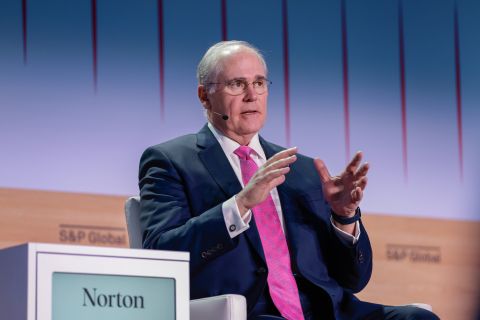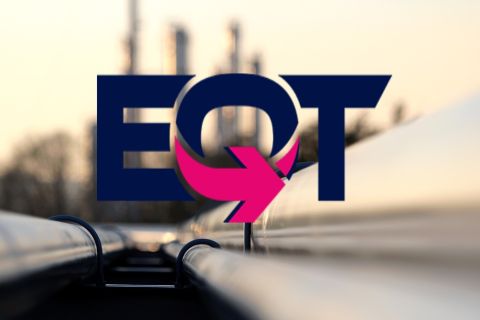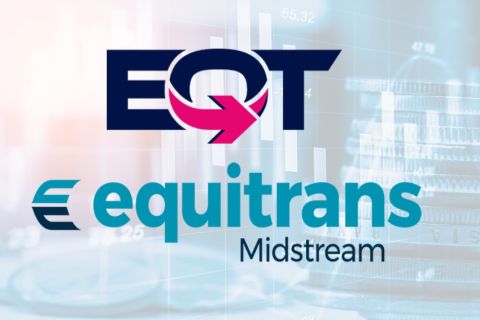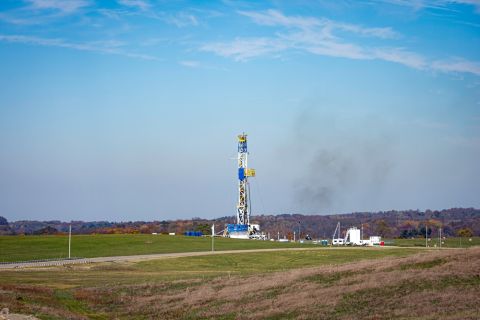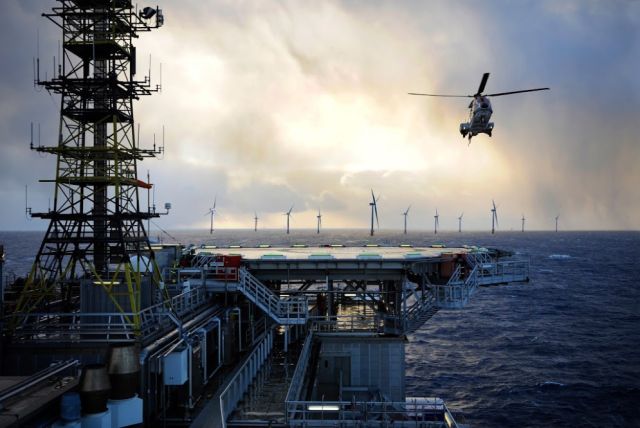
Illustration of Hywind Tampen floating wind farm from an extensive study done by Equinor evaluating which oil and gas installations on the Norwegian Continental Shelf were suited for power supply from a floating offshore wind farm. (Source: Equinor ASA)
Eldar Saetre, CEO of Norwegian energy group Equinor ASA, says he is preparing for a time when oil and gas companies face tougher penalties for hydrocarbon extraction.
The irony of Saetre’s strategy will not be lost on many: his state-controlled company, until last year known as Statoil, has been a key driving force behind the creation of Norway’s $1.1 trillion oil fund, ranked as the world’s largest sovereign wealth fund.
Even as the world’s reliance on fossil fuels persists, he says, capital allocation by investors, policy and public sentiment will all shift in favor of cleaner fuels.
So how does a traditional energy major prepare for a move towards a low-carbon future and what impact will this have on its asset portfolio?
“You will see regulation, more of it, costs attached to emissions, and that will be on top of other operating costs and development costs,” Saetre tells the Financial Times.
He says there is an “enormous” difference between the most and least carbon-intensive resources. “That distinction is going to be more and more important.”
__________________________________________________________________________________________________
RELATED:
“Peak Oil Demand” featured in the July 2019 issue of Oil and Gas Investor
__________________________________________________________________________________________________
With the growing threat of carbon taxes and pricing on production as well as consumption, and heightening environmental campaigning against oil and gas companies, the hunt is on for individual producers to deliver “cleaner” barrels.
Equinor, like a growing number of its peers, is trying to avoid the most carbon-intensive reservoirs, which emit huge volumes of CO₂ and other destructive pollutants when extracted and processed. Dirtier projects such as Canadian tar sands developments have fallen out of favor in recent years, not only because some oil and gas companies have committed themselves to pursue “cleaner barrels” but because this extraction was often the most expensive.
Lucky for Equinor, oil fields in Norway are some of the lowest carbon intensity in the world. Extraction is powered in part by hydropower and emissions have been regulated on the continental shelf for over a decade.
“If you’re trying to sanction new projects and you want to know if these projects are going to be economic in the future, then this metric is important to understand,” says Amy Bowe at Wood Mackenzie, the energy consultancy.
Anywhere between 15% and 40% of the total greenhouse gases generated by petrol, diesel and other transport fuels are generated before they even emerge from the refinery following extraction and transportation, according to industry studies.
By this “wells to wheels” measure of the carbon intensity of production, Venezuela and Canada are among the countries delivering oil with a particularly high carbon footprint. This is because their reserves are based on heavy oils including tar sands and are particularly energy-absorbing to extract.
Research conducted by Stanford University published last year showed that nearly 9,000 oil fields in 90 countries — accounting for 98% of the crude oil and condensate produced in 2015—created greenhouse gases equivalent to 1.7 gigatons of CO₂. But the carbon intensity of oil production per barrel or equivalent varied widely by source: accounting for the energy used to extract heavier, more viscous oils, and the associated and unwanted gas that is released and often flared — or burnt.
Understanding the future impact of carbon pricing and taxes is becoming a growing part of mainstream conversation in the energy industry when assessing the viability of future projects and the value of assets. Bowe says understanding the full extent of “how the carbon cost is imposed” is vital.
Meanwhile, analysis of the carbon intensity of particular oil and gas fields is becoming more important to energy majors as they come under pressure from campaigners and some shareholders to disclose emissions rates of current and future planned projects.
Saudi Arabia, the world’s leading oil exporter, has made a virtue of the fact that it flares little gas and has easy access to prolific resources of oil with low water content, which means less energy goes into treating and separating this oil. The kingdom in recent months has escalated a campaign to make this known.
But producers who demonstrate an intent to impose best practice and concentrate on the least polluting energy projects still cannot satisfy many campaigners who insist they must take responsibility for all greenhouse gases, including those released by the burning of their fuels by consumers. These so-called “scope three” emissions by end consumers, BP Plc and Equinor argue, are ones they have no control over.
Other companies such as Royal Dutch Shell Plc and France’s Total SA have acknowledged they must be held accountable in some way for these emissions too. “The emissions released from our own production are very small. Without addressing ‘scope three’, there is no point [in setting emissions targets at all],” says a top executive at one European oil major.
Recommended Reading
ONEOK CEO: ‘Huge Competitive Advantage’ to Upping Permian NGL Capacity
2024-03-27 - ONEOK is getting deeper into refined products and adding new crude pipelines through an $18.8 billion acquisition of Magellan Midstream. But the Tulsa company aims to capitalize on NGL output growth with expansion projects in the Permian and Rockies.
EQT Ups Stake in Appalachia Gas Gathering Assets for $205MM
2024-02-14 - EQT Corp. inked upstream and midstream M&A in the fourth quarter—and the Appalachia gas giant is looking to ink more deals this year.
EQT Deal to ‘Vertically Integrate’ Equitrans Faces Steep Challenges
2024-03-11 - EQT Corp. plans to acquire Equitrans Midstream with $5.5 billion equity, but will assume debt of $7.6 billion or more in the process, while likely facing intense regulatory scrutiny.
Ohio Oil, Appalachia Gas Plays Ripe for Consolidation
2024-04-09 - With buyers “starved” for top-tier natural gas assets, Appalachia could become a dealmaking hotspot in the coming years. Operators, analysts and investors are also closely watching what comes out of the ground in the Ohio Utica oil fairway.
OEP Completes Acquisition of TechnipFMC’s Measurement Solutions Business
2024-03-27 - One Equity Partners said TechnipFMC’s measurement solutions business will be rebranded as Guidant and specialize in measurement technology, automation solutions and global systems.

